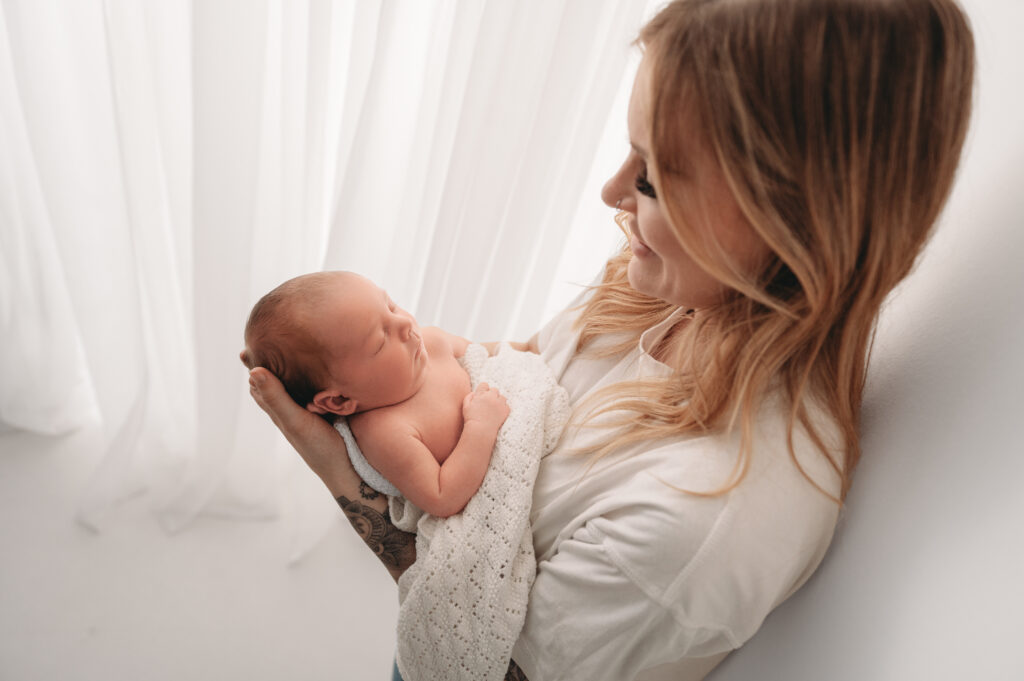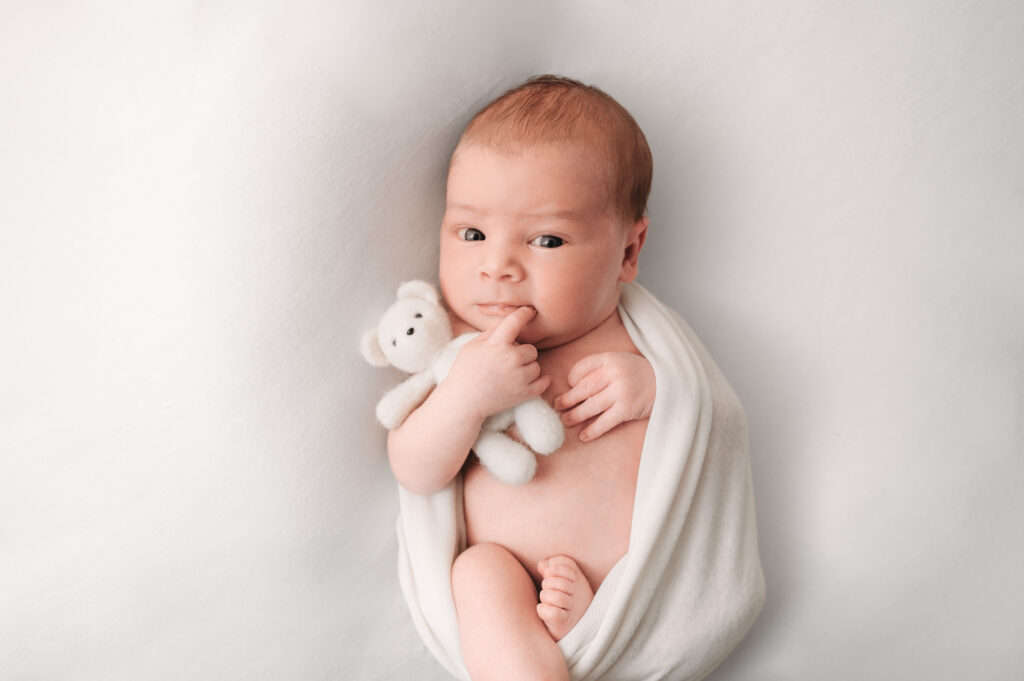How to prepare your home for a newborn baby
July 9, 2024
Congratulations, mama!
The arrival of your little one is without a doubt a life-changing experience, and one that you’ve probably spent months preparing for. In addition to physical and medical preparations, you’ve probably also thought about preparing your home, creating an calm environment that can guarantee your baby’s safety and comfort.
Preparing your home will also help you ease into parenthood keeping stress to a minimum: so much will change over the next few weeks, but you’ve got this!
Our “How to prepare your home for a newborn baby” guide will walk you through the essential help you will need to prepare your home for the arrival of your baby.

Create a Safe Sleeping Environment
You should start preparing the nursery as soon as possible. Some people begin to prepare in the first month. It is never too early to start. You can explore different colour wheels and styles, but important things should be in a nursery to keep it safe for your newborn baby
Go with a firm mattress and sheets for the crib. Keep the crib away from heaters, lamps, wall decorations, cords, and windows. You can install curtains to help darken the room during the day with naps. Set up a comfortable chair in the nursery for feeding and bonding with the baby.
It is essential to remember that most paediatricians recommend that parents share the room with the baby at least for the first six months. However, they do not recommend bed-sharing, so your newborn baby should be tucked away in a safe crib metres away from you.
Babyproofing Your Home: Creating a Safe Haven for Your Little Explorer
As your newborn grows into a curious crawler and eventually a toddling adventurer, it’s crucial to transform your home into a safe environment. Babyproofing is an ongoing process that should begin before your little one starts to move around independently, typically around 6 months of age. Start by getting down on your hands and knees to see your home from your baby’s perspective. This eye-level view will help you identify potential hazards that might go unnoticed from an adult’s height.
Begin in the most frequently used areas, such as the living room and nursery. Secure furniture to the walls to prevent tipping, especially items like bookcases, dressers, and TVs. Cover sharp corners on tables and other furniture with padded guards to prevent injuries from falls or bumps. Install safety locks on cabinets and drawers, particularly those containing cleaning supplies, medications, or small objects that could pose a choking hazard. Don’t forget to secure toilet lids with childproof locks to prevent drowning risks.
In the kitchen, use stove knob covers and oven locks to prevent curious hands from turning on burners or opening the oven. Store cleaning supplies and sharp utensils in high cabinets or use childproof locks. Consider installing a gate to keep your little one out of the kitchen altogether during meal preparation times.
Electrical outlets are fascinating to small children, so use outlet covers throughout your home. Secure loose cords from blinds, curtains, and electrical devices, as these can pose strangulation risks. Install smoke detectors and carbon monoxide alarms on every level of your home, and check the batteries regularly.
As your child becomes more mobile, stairs become a significant hazard. Install sturdy safety gates at the top and bottom of all staircases. Ensure that balcony railings and deck barriers have gaps no wider than 4 inches to prevent a child from slipping through.
Remember that babyproofing is not a one-time task. As your child grows and develops new skills, you’ll need to reassess and adjust your safety measures. Regularly check for loose screws, worn locks, or new hazards that may have been introduced as your home evolves. By creating a safe environment, you’ll give yourself peace of mind and allow your little one the freedom to explore and learn within secure boundaries.
Setting Up a Changing Station: Creating an Efficient and Comfortable Space
Creating a well-organised changing station is essential for making nappy changes quick, easy, and comfortable for both you and your baby. Start by choosing a location that’s convenient and easily accessible, ideally in the nursery or a central area of your home. The foundation of your changing station is a sturdy changing table or chest of drawers with a changing mat on top. Ensure the surface is at a comfortable height to prevent back strain during frequent nappy changes.
Safety is paramount, so select a changing mat with raised sides and always use the safety strap to secure your baby. Place all necessary items within arm’s reach to avoid leaving your baby unattended. Stock your station with an ample supply of nappies, wet wipes, nappy cream, and hand sanitiser. Organise these essentials in easy-to-reach containers or baskets to keep everything tidy and accessible. Include a small bin with a lid for disposing of dirty nappies and wipes hygienically.
Consider adding a few comfort items to make nappy changes more pleasant for your baby. A soft, washable cover for the changing mat can provide warmth and comfort. Keep a few small toys or board books nearby to entertain your baby during changes. Good lighting is crucial for those middle-of-the-night nappy changes, so install a soft, adjustable lamp or night light near the changing area.
Don’t forget to include a few extras that can make your life easier. A nappy caddy can be helpful for transporting supplies to other rooms or for travel. Keep a spare set of clothes nearby for quick changes after nappy mishaps. If you’re using reusable nappies, include a wet bag for storing soiled nappies until laundry time.
Remember to replenish supplies regularly and clean the changing area frequently to maintain a hygienic environment. By creating a well-stocked and organised changing station, you’ll streamline the nappy-changing process, making it a smoother experience for both you and your baby. This thoughtful setup will save you time and stress, allowing you to focus on bonding with your little one during these frequent care routines.
Organise Feeding Areas
Whether you breastfeed or bottle-feed your newborn, you need a comfortable nursing station setup. Comfy chairs and side tables for water and snacks should be set up. The chairs can be padded, and supportive pillows can be added for comfort.
If the baby is to be bottle-fed, the nursing area should have sterilising equipment, formula, and bottles. You can install a mini fridge to store prepared formula or breastmilk. Your kitchen should also be prepared to adjust to the baby’s needs. Storage spaces for the baby things should be cleared.
Also, consider stocking up on easy-to-prepare meals for yourself and your family, as caring for newborn babies takes up much time and leaves everyone too exhausted to prepare long meals.
Storage!
Are you having difficulty getting all that baby stuff to fit in your home? Try implementing smart storage options. You can use closet organisers to store away baby clothes, arranging them by size and type.
You could use drawer dividers to store away gloves, mittens, and socks. Items that are not to be used frequently can be stored away. Open baskets and shelves should be explored, as they offer easy access.

Laundry Plans: Tackling the Never-Ending Pile… Efficiently!
With a new baby in the house, laundry can quickly become an overwhelming task. Creating a solid laundry plan is essential to keep on top of the seemingly endless stream of dirty clothes, muslins, and bedding. Start by setting up a system of multiple laundry baskets: one for baby’s clothes, one for parents’ clothes, and one for bedding and towels. This pre-sorting saves time when it’s time to wash. Aim to do a load of laundry every day or every other day to prevent build-up. Baby clothes are best washed separately using a gentle, fragrance-free detergent to avoid irritating your little one’s sensitive skin.
For efficiency, consider investing in a large-capacity washing machine and tumble dryer if space and budget allow. This enables you to wash more in one go, saving time and energy. When possible, line-dry clothes outdoors; the fresh air and sunlight can help remove stains and odours naturally. Keep a stain removal stick or spray near the changing station for immediate treatment of stubborn marks on baby clothes.
Folding and putting away clean laundry can be a challenge with a newborn demanding attention. Try to fold clothes whilst watching telly in the evening or during the baby’s naps. Alternatively, designate a ‘laundry day’ where you batch-process all the washing, drying, and folding at once, perhaps enlisting help from your partner or a family member.
For baby clothes, consider using drawer dividers or small boxes to keep different sizes organised as your little one grows. This makes it easy to grab the right size quickly during rushed changes. Don’t forget to wash new clothes before your baby wears them to remove any irritants from the manufacturing process.
Lastly, be prepared for the unexpected. Keep a spare set of clothes for both baby and parents in your changing bag for those inevitable accidents when out and about. By establishing a consistent laundry routine and staying organised, you can keep the mountain of dirty clothes at bay and ensure your family always has clean clothes ready to wear. Remember, perfection isn’t the goal – maintaining a manageable system that works for your family is what matters most in these busy early days of parenthood.
Baby medicine recommended by paediatricians should also be included in the kit. Babies are prone to common illnesses during those first months, so remember to keep emergency numbers and those of the paediatrician within easy reach.
Conclusion: Preparing Your Home For Your Newborn Baby
The first week after giving birth marks the beginning of an incredible journey filled with joy, challenges, and profound changes. As you navigate this new chapter, remember that every parent’s experience is unique, and it’s perfectly normal to feel overwhelmed at times.
During this initial period, prioritise your physical recovery and emotional well-being. Don’t hesitate to lean on your support network, whether it’s your partner, family, friends, or healthcare professionals. Accept help when offered, and don’t be afraid to ask for it when needed.
As you care for your newborn, trust your instincts and remember that you’re learning together. It’s a time of constant discovery – both about your baby and yourself as a parent. Be patient with yourself and your little one as you establish new routines and bonds.
Self-care is crucial during this time. Ensure you’re getting adequate rest, nutrition, and moments of relaxation. Remember, taking care of yourself enables you to provide the best care for your baby.
While the challenges of sleepless nights, physical recovery, and emotional adjustments may seem daunting, they are temporary. Soon, you’ll find your rhythm and confidence as a parent growing day by day.
Cherish these early moments with your newborn, as fleeting as they may be. Take photos, keep a journal if you wish, and create memories that you’ll treasure for years to come.
Lastly, remember that there’s no such thing as a perfect parent. You’re doing an amazing job simply by showing up each day with love and care for your little one. As you move beyond this first week, carry with you the knowledge that you’re embarking on one of life’s most rewarding adventures.
Trust yourself, embrace the journey, and congratulations once again on your new arrival!
Add a comment
0 Comments